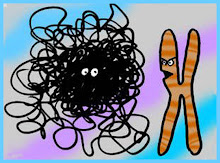 Photo courtesy of Tommy Schulz, a US Peace Corps
Photo courtesy of Tommy Schulz, a US Peace Corpsvolunteer who was assigned in Dumaguete a few years ago.
The boulevard and the tartanilla ineluctably bring me back to my childhood.
It was September 1971 and I was in grade school. My classmates and I spent the whole day swimming in the then clean waters of the boulevard. We weren’t really swimming. We were just playing in the water and chatting about the things that were so important to us then. Our favorite movie stars perhaps. Or maybe that naughty girl in third row. The whole day, yes.
We got out of the water at dusk and I remember shivering under the acacia tree, embracing our own wet selves for we did not bring any towels or a change of clothes. It was just a spur of the moment decision to soak in the sea. Somebody said, “We have to go home now. And we can’t do this again tomorrow. Because of Martial Law.”
Of course we did not understand what Martial Law meant. We huddled and talked in hushed whispers, “What is Martial Law? What is a curfew?” It was so mysterious, so befuddling, so beyond our understanding. For us it only meant that our shriveled palms would have a chance to recover from a prolonged briny immersion before our next sea session.
For we had many sea sessions then. My Lolo Cente had a persistent cough and was diagnosed to have “weak lungs”. I think now maybe that referred to tuberculosis and his doctor prescribed that he take daily dips in the ocean. And so everyday he would go to the boulevard to take a dip and if we did not have classes we, my cousins and I, would go with him and bathe in the sea as well. On weekends our big family of siblings, cousins, uncles and aunties would have real picnics at any of the many beaches nearby.
After high school, I went to college in UP Diliman where to my silent shock and disbelief I discovered that a boulevard did not necessarily come with a body of water. For the longest time I could not accept that Quezon Boulevard was just a street and not a walkway beside the sea.
During summer and semestral breaks we would go home to Dumaguete and stroll along the boulevard, our boulevard beside the sea. The waters were not fit for swimming or dipping anymore, so polluted it had become. So we contented ourselves with riding the tartanillas parked along the boulevard.
The tartanillas again evoke distinct memories of childhood and youth. Even at a young age my friends and I already had "hectic" schedules. Classes here, practices there, meetings and play-ings everywhere. We did not like to ride the tartanilla because they were so slow compared to the motorized pedicabs. We only rode the lowly calesas when there were absolutely no more empty pedicabs to be found.
Today there are only maybe two or three tartanillas left in the city and lately I haven’t seen any of them plying the now very much congested city streets. The only time the tartanillas come out is during themed weddings and fiestas when the newlyweds or the reyna and the princesa would ride the flowers-and-ribbons-bedecked carriages.
This time, however, whenever anyone rides the tartannilla, the objective is never to hurry to the destination. We ask the cochero, " Go slow, Manong, we want to enjoy the ride."




2 comments:
That is a beautiful post, which I find deeply evocative. I wish I had grown up in Dumaguete, although doing so in the Davao City of the mid-'60s to early '70s was also quite wonderful, in many, many ways.
Yey, thanks, Lou.
Tsada gyud ang Dumaguete, tinuod. And my best memory of Davao is: the food! plen.titio.us and del.icio.us.
And thanks for "ineluctably" - that's a word I learned from you. :-)
Post a Comment